| Desert Island Hell
The Royal County of Berkshire and surrounding principalities turned out in force for the annual Festival of Crime Writing in Reading last month (the event having moved from September to avoid a clash with Bouchercon in America), and in particular to see that leading lady of crime fiction Minette Walters put through hell.
It is almost ten years since Minette appeared on the real Desert Island Discs and to mark the event she foolishly agreed to switch to the dark side and submit herself to a live performance of her own personal Desert Island Hell – which is an event very much like the long-running radio show, but without the annoying music – where instead of naming her favourite things, Minette had to list the things (and people) which would make her life hell on a desert island. And it was quickly revealed that this would not be a tropical island, but rather a desolate and icy one somewhere within the Arctic Circle, probably called Nilbog and populated only by polar bears and trolls. (You had to be there; if only to experience the collective sharp intake of breath from the audience when Minette admitted that she hated white chocolate!)
For me, it was an honour to reprise the Sue Lawley role as Minette’s interrogator and afterwards to act as Crowd Control Security whilst she signed books for her legion of fans (once I had signed a copy of one of my books for my legion of fan).
Unfortunately, my presence on a desert island prevented me from participating in the creative writing class run by Caroline (Midsomer Murders) Graham at the Lavenham Festival in beautiful Suffolk. I am sure I would have learned much, as did the attendees at her seminar pictured here in what looks uncannily like the Gun Room at Ripster Hall.
 |
Clubland Heroes
There was a splendid turn-out of the great and good to celebrate the presentation of the 2011 Ellis Peters Award for historical crime fiction in the hallowed halls of The Athenaeum at the heart of London’s Pall Mall. The famous club’s equally famous dress code, however, seemed to take some of the younger generation by surprise and I hear there was a positive boom in tie sales in the area that afternoon.
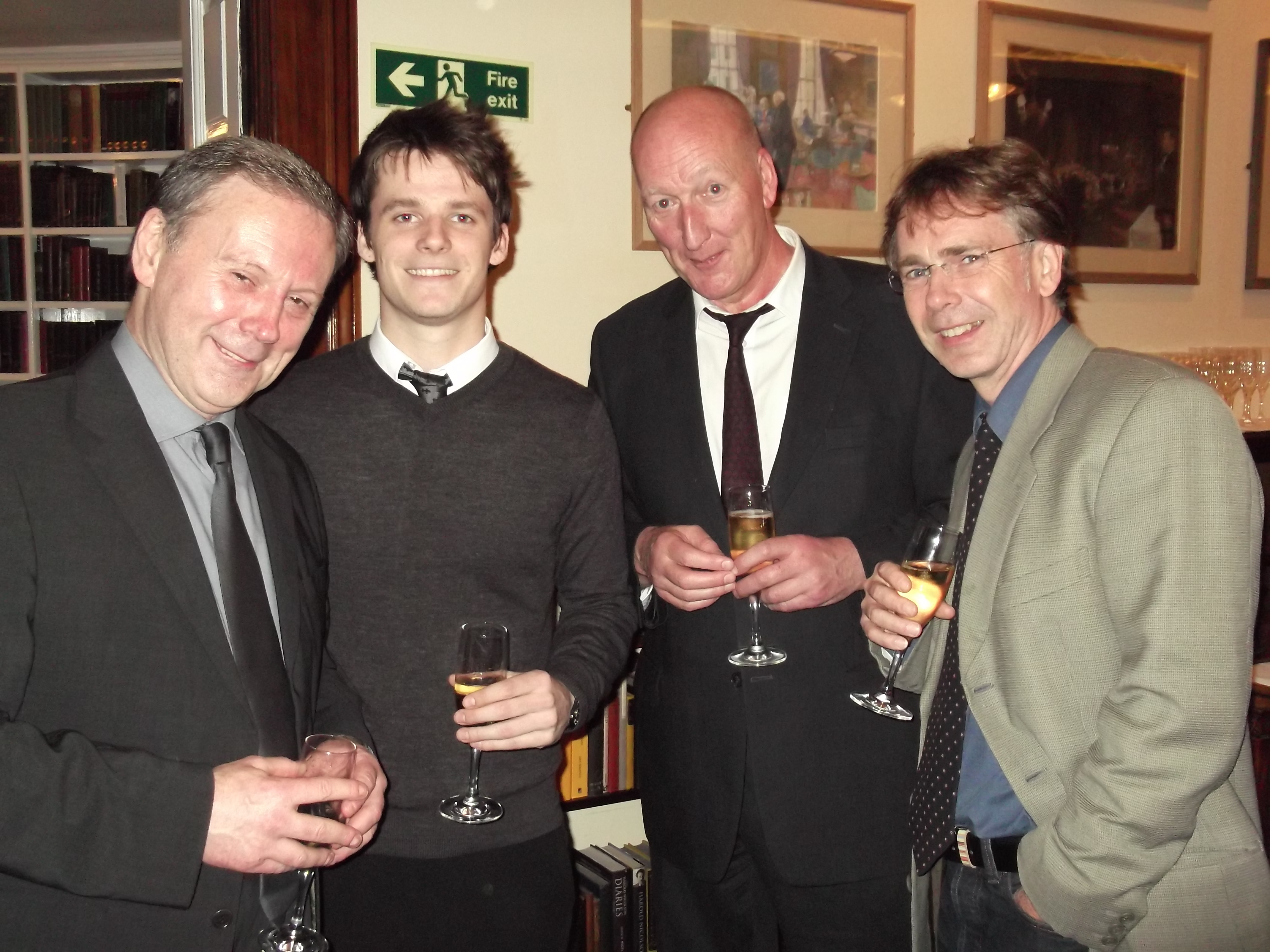 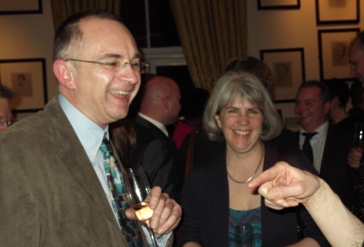
Among the crowd I spotted Professor Barry Forshaw chatting to Headline ingénue Ben Willis, Man-about-town Peter Guttridge and Headline editor at large Martin Fletcher. At one point Professor Forshaw handed out a small tract entitled Where to start with Scandinavian crime fiction which I thought at first was simply a rhetorical statement but in fact turns out to be a promotional flyer for Barry’s book Death in a Cold Climate which comes out from Palgrave Macmillan in January.
It was, as it always is, a delight to catch a few words with R. N. Morris and his partner as his latest ‘Porfiry’ novel The Cleansing Flames was one of the books shortlisted for the Award. Although he did not win, Roger was in fine spirits and gratefully accepted the help of a Shots reporter who pointed the way to the bar.
The Eyes Have It
Not that long ago I remember having to check my blood pressure after reading that a British crime writer – a member of the elite Detection Club and prolific blogger – had openly admitted to never having read anything by either John D. or Ross Macdonald.
For many years now I have been resigned to the fact that many of the Young Turks in publishing and bookselling these days (I have actually no idea whether they are Turkish or not, but they are young) have no idea who Ross Macdonald was and have probably never heard of his most famous fictional creation‚ private eye Lew Archer. But for a member of the Detection Club to admit to never having read him (or indeed either author) is astonishing. Is there not an Entrance Exam for the Detection Club?
The blissfully ignorant may not remain so for very long as there is a strong rumour (I read it on the interweb so it must be true) that a famous Lew Archer novel‚ The Galton Case‚ is to be filmed for the big screen. There have been other film (and television) adaptations of Ross Macdonald’s books in the past; most famously with The Moving Target in 1966 starring Paul Newman as Archer‚ even though the character was called ‘Harper’ in the film‚ but the importance of the novels goes way beyond a couple of movie adaptations. 
Kenneth Millar (1915-1983) wrote under his own name and as both ‘John Macdonald’ and ‘John Ross Macdonald’ before plumping for Ross Macdonald and becoming‚ with the creation of Lew Archer in 1949‚ the acknowledged heir to Raymond Chandler and Dashiell Hammett. (Indeed his hero’s surname is in homage to the partner of Hammett’s fictional P.I. Sam Spade.) The Archer novels, of which I think there were eighteen between 1949 and 1976, have been criticised for repetition of themes and plot devices and even the author (or so I’m told) joked that he had written the same book several times but that should not take anything away from Macdonald’s reputation as a first class writer who combined the whodunit with the psychological thriller plus social commentary to such great effect. I am amazed to discover that The Moving Target has been out of print in the UK (though not the US) for 25 years.
As for anyone, Detection Club member or not, who has never read anything by John D. McDonald ... Oh, don't get me started.
Making A Killing
 The second series of the Danish crime thriller The Killing – the first of which attracted a small but influential chattering audience here – has finally made it to the UK’s television screens on a rather obscure Channel called BBC4. (Since when have there been more than two BBC channels? I really must keep up.) The second series of the Danish crime thriller The Killing – the first of which attracted a small but influential chattering audience here – has finally made it to the UK’s television screens on a rather obscure Channel called BBC4. (Since when have there been more than two BBC channels? I really must keep up.)
The series has been two years in the making – one to write the script and one to knit the jumpers – and although it closely follows the formula of the first series, I have to say it is well done and it was the subject of a quite superb article by crime writer(s) Nicci Gerrard in that once-great newspaper the Daily Telegraph on 19th November.
If there is any justice, the Gerrard feature should appear on a Telegraph website somewhere – I believe even the Telegraph has such a thing these days – and it was one of the items which persuaded me that the paper’s recent price rise was perhaps worthwhile.
The other reassuring item in that same edition was the Telegraph’s selection of Best Thrillers of 2011, which named John Lawton’s A Lily of the Field as its #1 choice. This shows that there is some scrap of intelligence and judgement left in the world of crime fiction awards, for as I have noted in a recent rant I think this novel has been disgracefully overlooked by the Ministry of Mystery Prizes.
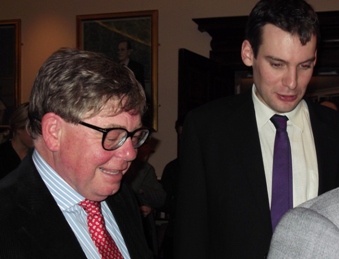
The Telegraph’s dynamic duo who compiled the list, Jeremy Jehu (thrillers) and Jake Kerridge (crime) were on hand for the Ellis Peters Awards, one of the rare occasions when they were seen together in the same room, thus disproving many rumours.
Interestingly, Aly Monroe’s Icelight (which you read about here first) was the discerning Jeremy’s #2 choice and even more interestingly, taking the top five ‘best thriller’ and the top five ‘best crime novel’ lists together, English, Scottish, Australian, American and South African writers all feature, though not a single Scandinavian. Could it possibly be that the Scandinavian crime wave is beginning to recede?
Coincidentally, it is also a pleasure to congratulate Denise Mina on her latest novel The End of the Wasp Season, which has just won the 2011 Martin Beck Award from the Swedish Crime Writers’ Academy. As we say in Glasgow: ‘See you, Scandiland.’
Criminal New Year
Coming up in 2012; a rapid round-up of titles to watch out for in the early part of next year.
Death’s Door is Jim Kelly’s fourth DI Shaw and DS Valentine novel‚ again set in Norfolk but now from publisher Crème de la Crime, who will also publish the fifth Liberty Lane adventure set in London in 1840, Keeping Bad Company by Caro Peacock – better known as the award-winning Gillian Linscott. In March‚ another history-mystery specialist returns in the shape of Rosemary Rowe whose A Whispering of Spies comes out from Severn House and sees the very welcome return of the resourceful Libertus‚ her reluctant detective from a brilliantly realised 2nd century Roman Britain; and in the same month Severn House publish a new history-mystery set in Malaya in the 1950s, Dead In The Dog by Bernard Knight. Fans of Professor Knight’s work will not be surprised (though certainly delighted) to hear that his new protagonist is a young National Service army pathologist. Whether the novel is autobiographical or not I am not sure, but as a former Home Office pathologist, Professor Knight follows the famous maxim of fiction and writes about what he knows best.
I always look forward to a new David Hewson novel, for they are 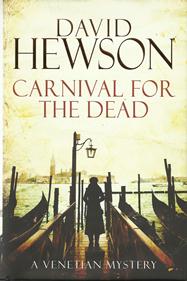 usually set in warm and interesting places such as Seville and Rome, which must remind David of his native Bridlington and I shall pay particular attention to his Carnival for the Dead which is published by Macmillan in January. usually set in warm and interesting places such as Seville and Rome, which must remind David of his native Bridlington and I shall pay particular attention to his Carnival for the Dead which is published by Macmillan in January.
It is typical of David Hewson to blindside and bamboozle his many fans with a new protagonist – forensic pathologist Teresa Lupo – and a new setting (Venice) just when all the gossip, at least in Soho House and The Groucho Club, is about the possible television adaptations of his wonderful ‘Nic Costa’ books which are set in Rome and seem tailor-made as a replacement for the unfairly discarded Zen series. There are also rumours (possibly fuelled by alcohol and half-overheard conversations) that David is to cooperate with Danish scriptwriter Soren Sveistrup on a novel based on The Killing. If I see David wearing a new brightly coloured fisherman’s sweater, I’ll know it must be true.
Also published, by Sphere, in January is ‘the next thriller sensation from the 100,000-copy-selling author of Sphinx’ which, if you have to ask is ‘T.S. Learner’ and the Quest thriller in question is The Map. (‘Quest’ being my recently-invented catch-all term for this sub-genre.)
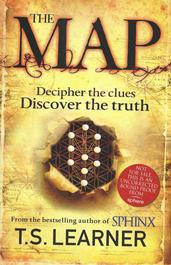
I am told that The Map is an ingenious thriller of mazes, riddles, witchcraft and centuries-old secrets and of course I always believe everything a publisher tells me, even if they have been less than forthcoming about the author. I may be wrong, but could ‘T.S. Learner’ be Tobsha Learner, the author of several volumes of erotic fiction and a well-known playwright in Australia?

Tobsha Learner also does an interesting line in self-promotional videos, one of which can be seen at http://www.youtube.com/watch?v=JdTp3uR8ZYA although it does not mention her recent move into mega-selling Quest thrillerdom.
I will naturally be on the look-out for the new John Harvey, as I always am. His new novel, in January from William Heinemann, is Good Bait and opens with the murder of a young, blue-eyed Moldovan boy, his body found in an icy pond on Hampstead Heath. The plot – this being a John Harvey – rapidly expands to involve gang warfare and organised crime and is further complicated by the arrival from Cornwall (another favoured Harvey stomping ground) of DI Trevor Cordon up in the big city investigating a seemingly unrelated case. There again, plot-lines are rarely ‘unrelated’ in John Harvey’s masterly hands.
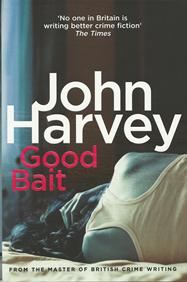 |
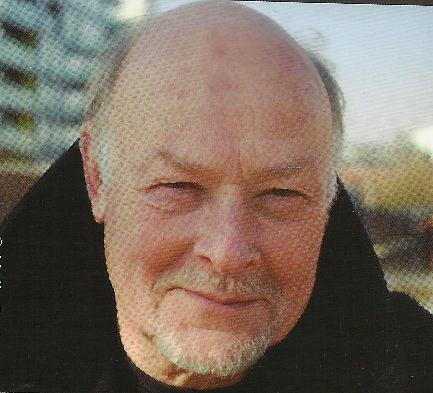 |
My old chum and fellow boulevardier Ken Bruen is not given to providing careless ‘blurbs’ for the jackets of other authors’ crime novels. (Well, he never did for any of mine.) So I was genuinely surprised to see him in positively gushing mode when quoted on the dust jacket of Total Immunity by American Robert Ward, coming from Corvus in January although published in the US back in 2009. “Burns and blitzes like Ellroy on Meth…” enthuses Ken, “(Robert) Ward has not only moved the mystery to a whole new era, he has written a novel that deserves to be the mystery of the year.”
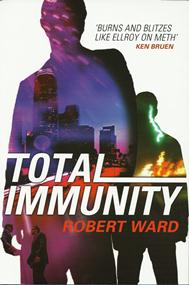
Now I have not previously heard of Robert Ward, which is no doubt my loss, and I do not think Total Immunity was judged “mystery of the year” by the Mystery Writers of America in 2009 despite Ken’s exhortation, but his enthusiasm is such I feel obliged to give it a try.
I admit, however, that I will be giving precedence among the January titles to Liar Moon by Ben Pastor (from Bitter Lemon), the second WWII thriller to feature the aristocratic and very humane Wehrmacht Major Martin Bora. His first outing (for this country) was in Lumen early this year; a gripping and often chilling account of a murder investigation in the early days of the Nazi invasion of Poland in 1939. Liar Moon is set in Italy in 1943 and Bora again finds himself reluctantly leading a murder investigation on behalf of the political masters he despises.
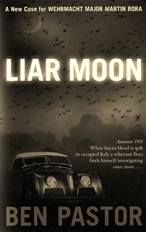
For reasons which require the services of a real detective – for I cannot fathom them – both Ben Pastor’s Martin Bora books, although written in English, have taken ten years or more to get published in England.
|
|
Cry ‘Murdrum’
It must be – incredibly – 21 years now since I first met the prolific history-mystery writer Paul Doherty. We had been invited to talk on crime writing at an event organised by some London libraries in a joint venture with the famous bookshop Murder One; in fact Murder One’s Maxim Jakubowski actually drove me to the event, where Paul was without question the star attraction and I (a complete unknown) was simply the warm up man. It was, I hasten to add, an absolute pleasure to be the warm-up act for such a gentle and generous guy.
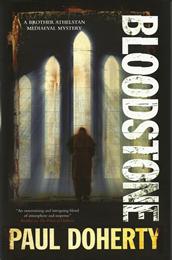 |
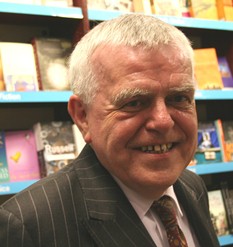 |
That was so long ago it was even before Paul embarked on possibly his most well-known series, ‘The Sorrowful Mysteries of Brother Athelstan’ set in the 14th century, and in the intervening years Paul has written probably fifty novels set in various periods of history including ten adventures featuring Athelstan, a Dominican friar and parish priest who is also a dab-hand at detective work whenever it is required which, in Paul Doherty’s historical settings, is frequently.
I am delighted to see that Brother Athelstan now makes his eleventh appearance in Bloodstone, published by Crème de la Crime.
Can We Trust Our Spies?
(Or is it just the spy writers?)
I feel genuinely sorry for the fledgling (at least over here)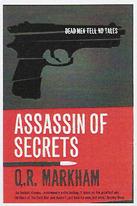 imprint Mulholland Books and that talented young British spy-fiction writer Jeremy Duns, for both have suffered in the furore which has surrounded the withdrawal – before publication – of the novel Assassin of Secrets by one ‘Q.R. Markham’ following charges of plagiarism. imprint Mulholland Books and that talented young British spy-fiction writer Jeremy Duns, for both have suffered in the furore which has surrounded the withdrawal – before publication – of the novel Assassin of Secrets by one ‘Q.R. Markham’ following charges of plagiarism.
Not only was the American branch of Mulholland fooled into accepting (and presumably giving an advance for) a book which turned out to contain thinly disguised passages taken en bloc from the work of some rather well-known spy-fiction writers, but the “author” actually approached Jeremy Duns pre-publication for a blurb to put on the cover!
Perhaps a more eagle-eyed editor (or just someone not as young as editors are these days) may have heard a faint warning bell when the “author” – a New York 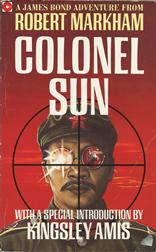 “poet” (allegedly) and bookseller – Quentin Rowan adopt the name “Q.R. Markham” for his Cold War thriller set in 1968. Or perhaps it is only those of us of venerable age who remember Colonel Sun, the first James Bond book post Ian Fleming published in 1968 and written by Kingsley Amis under the pen-name Robert Markham. “poet” (allegedly) and bookseller – Quentin Rowan adopt the name “Q.R. Markham” for his Cold War thriller set in 1968. Or perhaps it is only those of us of venerable age who remember Colonel Sun, the first James Bond book post Ian Fleming published in 1968 and written by Kingsley Amis under the pen-name Robert Markham.
As the book was pulled by the American branch of Mulholland before its publication in the UK, I did not receive a review copy so I haven’t actually read Assassin of Secrets. I am, however, reliably informed that as I am conversant with the works of Charles McCarry, Robert Ludlum and, in particular, the James Bond books written by the legendary John Gardner (especially Licence Renewed), I can save myself some time and simply take it as read.
The Admirable Crichton
An internationally famous author, renowned for work which has translated into Hollywood gold (Jurassic Park, Andromeda Strain, Rising Sun and Westworld) and sometimes silver or bronze (Eaters of the Dead, Sphere and Disclosure) not to mention immensely popular television shows (ER) and some very fine thrillers (Binary), manages to produce a bestseller three years after his death.
This would sound like the plot of a Michael Crichton book if I did not know better.
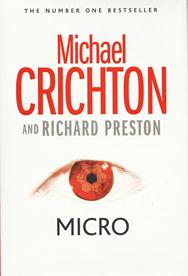
In fact the multi-talented Michael Crichton had completed a third of Micro before his untimely death in 2008 and science writer Robert Preston was asked to finish the book from Crichton’s notes. The result is now published by HarperCollins.
In Cool Company
As a crime writer‚ I was often mentioned in the same breath as Bill James‚ John Harvey‚ Chester Himes‚ James Ellroy and James Lee Burke. Well perhaps not often‚ but I was once. It was in the year 2000 and it was‚ of course‚ in Australia.
Giving the eighth Annual Bell Jazz Lecture in Sydney that year‚ editor and bibliophile Peter Newton chose as his subject Along Dark Alleys: the literature of jazz and crime and provided an exhaustive catalogue of crime writers and their use (or mention) of jazz and blues in their fiction. I duly find myself in some very distinguished company and (despite the spelling mistakes) the full lecture has now been made available on the jolly old interweb at: http://www.waverley.nsw.gov.au/__data/assets/pdf_file/0005/18608/2000_Doubly_Gifted_Annual_Bell_Jazz_Lecture.pdf
Virtual Dorothy
The perfect Christmas gift for any dedicated fan of the work of Dorothy L. Sayers, particularly her much-loved 1934 classic The Nine Tailors, must surely be the recently published (on CD) ‘virtual tour’ of The Parish Church of Fenchurch St Paul – the church, its fabulous Fenland setting and of course its bells, which plays a prominent role in DLS’ famous book.

A visual album of antique photographs and architectural drawings compiled by architect David Collins and following Dorothy’s original notes and manuscript now lodged in the Wade Centre at Wheaton College in America, the CD takes the viewer on a tour of the churchyard, the church itself and, of course, the bell tower, though to say more would classify as a ‘plot spoiler’ for any unfortunate who hasn’t read the book.
The CD costs £12 or $24 plus postage and can be ordered on line from the DLS Society at www.sayers.org.uk.
The (publicity) Game’s Afoot
With a cheekiness which one cannot but admire, the paperback edition of Graham Moore’s The Holmes Affair (Arrow) comes with the exhortation: Discover the secrets of Sherlock Holmes before you see the film.
Now I have no idea how many Sherlock Holmes films there are – though I suspect quite a lot, and I also suspect someone will tell me – but I’m pretty sure the one the publishers are referring to is the upcoming Sherlock Holmes: A Game of Shadows directed by Guy Ritchie. I am also pretty sure that Graham Moore’s book has nothing whatsoever to do with Robert Downey Jnr’s interpretation of the iconic detective (which I happen to think is great fun), but is actually more concerned with the author of the original stories, as The Holmes Affair scene-shifts between the modern-day discovery of Arthur Conan Doyle’s diary, a Holmesian ‘scholar’ and the (real) Baker Street Irregulars organisation. In the ‘lost diary’ – a familiar enough device in Holmesian pastiches, although it is usually papers locked in a bank vault – Doyle describes his investigation of a murder case in 1900 with no less a personage than Bram Stoker acting as his ‘Doctor Watson’. The diary itself, or rather possession of it, then sparks the contemporary violent mystery.
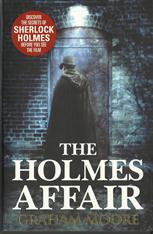 |
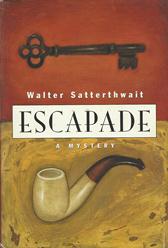 |
Making Conan Doyle the centre of attention is not, of course, new and indeed one of my favourite crime novels of the last half century, Walter Satterthwait’s Escapade from 1995, has Sir Arthur investigating a mystery in a country house in Devon in 1921, with Harry Houdini as his Dr Watson!
Not only does it seem that you can’t keep a good character down; but you can’t keep a good author down either.
Cold Gold
And you also can’t keep a good story down, especially when it is based on historical events, which are usually stranger and more interesting than fiction anyway.
I first heard of Tsar Nicholas’ missing gold treasury and Admiral Kolchak when being taught Russian history by the not-then-famous comic novelist Tom Sharpe. Basically, when the Russian revolution broke out in 1917, the Tsar’s stash of gold was supposedly entrusted to Admiral Kolchak who was to become the leader of the counter-revolutionary ‘White’ forces in the ensuing civil war, Kolchak himself becoming one of its victims (thanks to a ‘Red’ firing squad) in 1920.
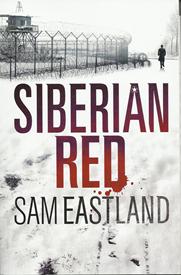 |
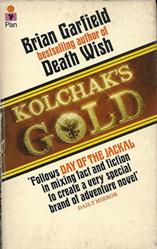 |
In Siberian Red by ‘Sam Eastland’ (aka Paul Watkins), none other than Josef Stalin takes an interest in the Tsar’s missing gold, and who better to investigate the mystery and be sent east to Siberia than his trusted special investigator Pekkala, despite this being 1939 and WWII is breaking out in the west? This is the third Inspector Pekkala adventure in a series which has drawn comparison with the best of John Buchan and I am grateful to publishers Faber for sending me a copy in advance of publication in February so that I can enjoy it over Christmas, where I intend to make time to re-read an older thriller of which I have fond memories, Brian Garfield’s Kolchak’s Gold which put a 1970s slant on the hunt for the fabled Romanov gold.
From Romania With Love
I discover that my old crime-writing chum and fellow boulevardier Mike Phillips is now the series editor for a new imprint, Profusion Crime, which aims to bring the best of East European crime writing to an English reading audience, and their opening salvo is something of a showcase for three Romanian writers.

George Arion, Oana Stoica-Mujea and Bogdan Hrib (pictured left-to-right) are not, I venture, familiar names in this country as yet, but who knows?
George Arion’s first novel Attack in the Library is certainly well-known in Europe, having been published in 1983 but only now being translated into English. For Bogdan Hrib too, Kill the General marks a debut in English as does Anatomical Clues for Oana Stoica-Mujea whom the Profusion Crime website describes simply and modestly as “one of the most brilliant women in Europe”.
Shots of the Year
And now the moment the world of crime fiction has been waiting for…the awards which come with no ceremony, no prize money, little accolade and no celebration (unless you happen to be in the Four Ale Bar of The Carpenter’s Arms on Tuesday night). The Shots of the Year awards (often misheard) are made based on careful consideration of the 550 or so crime novels and thrillers published for the first time in the UK in 2011 by a panel of at least one democratically-elected judge. (And I use the term ‘democratically’ in its loosest, North Korean sense.)
The categories are for best crime novel (Crime Shot) and best thriller (Thriller Shot), funniest novel (Comic Shot), best crime novel/thriller in translation (Shot In Translation), best first novel (First Shot) and best historical mystery or thriller (Historical Shot).
Crime Shot of the Year, after much deliberation, goes to Three Stations by Martin Cruz Smith (Mantle), the new Renko novel which chillingly invokes the underside of modern Moscow and made us all remember what an important figure in crime fiction Renko is and has been for, incredibly, thirty years now.
The Thriller Shot of the Year title goes to South African Deon Meyer for his superb tour-de-force Trackers (Hodder) which combines a spy plot worthy of Le Carre (“spy the beloved country”) with several tense and violent criminal sub-plots and a complex and stunningly impressive narrative structure. All in all, a masterpiece of South African crime writing; which is rapidly proving to be the bench-mark of international crime fiction.
The 2011 Historical Shot goes, without question, to the disgracefully overlooked A Lily of the Field by John Lawton (Grove Atlantic). An immaculately researched thriller set in pre-war Europe and post-war London which takes in the Nazi Holocaust, Russian espionage and the development of the atomic bomb, but at heart it shows off what Lawton does best, which is to cast a worldly-wise, left-leaning, eye of the foibles of English society. This is a wonderful addition to the Detective Inspector Troy canon (Lawton’s Troy family novels have spanned the period 1930s-1960s though not necessarily in chronological order), and Troy, who has been on the scene for 16 years now, is one of the major characters of British crime fiction; and one of the most unsung.
The Shot in Translation goes to a new name in the UK, Domingo Villar for his Death on a Galician Shore (Little, Brown) which introduces a new detective duo, some memorable minor characters and some delightful insights into provincial Spanish life which are worth the price of admission alone. A translated crime novel with warmth and heart? Who’d have thought it?
First Shot, in a year which saw fewer than usual debut novels, has to go to the widely-applauded Before I Go To Sleep by S.J. Watson (Doubleday), which is an outrageous “high concept” thriller brought off with confidence and élan, even if the dramatic conclusion is slightly confusing.
Comic Shot of 2011 is Carl Hiaasen’s Star Island (Sphere). It might not have the frenetic energy and hysterical set-pieces of his early work such as Tourist Season or the blissful Double Whammy, but then what could? Still, this is Hiaasen back on top form and picking his targets (pop stars and, as usual, property developers) with gleeful malice.
Merry Christmas One and All,
The Ripster
|